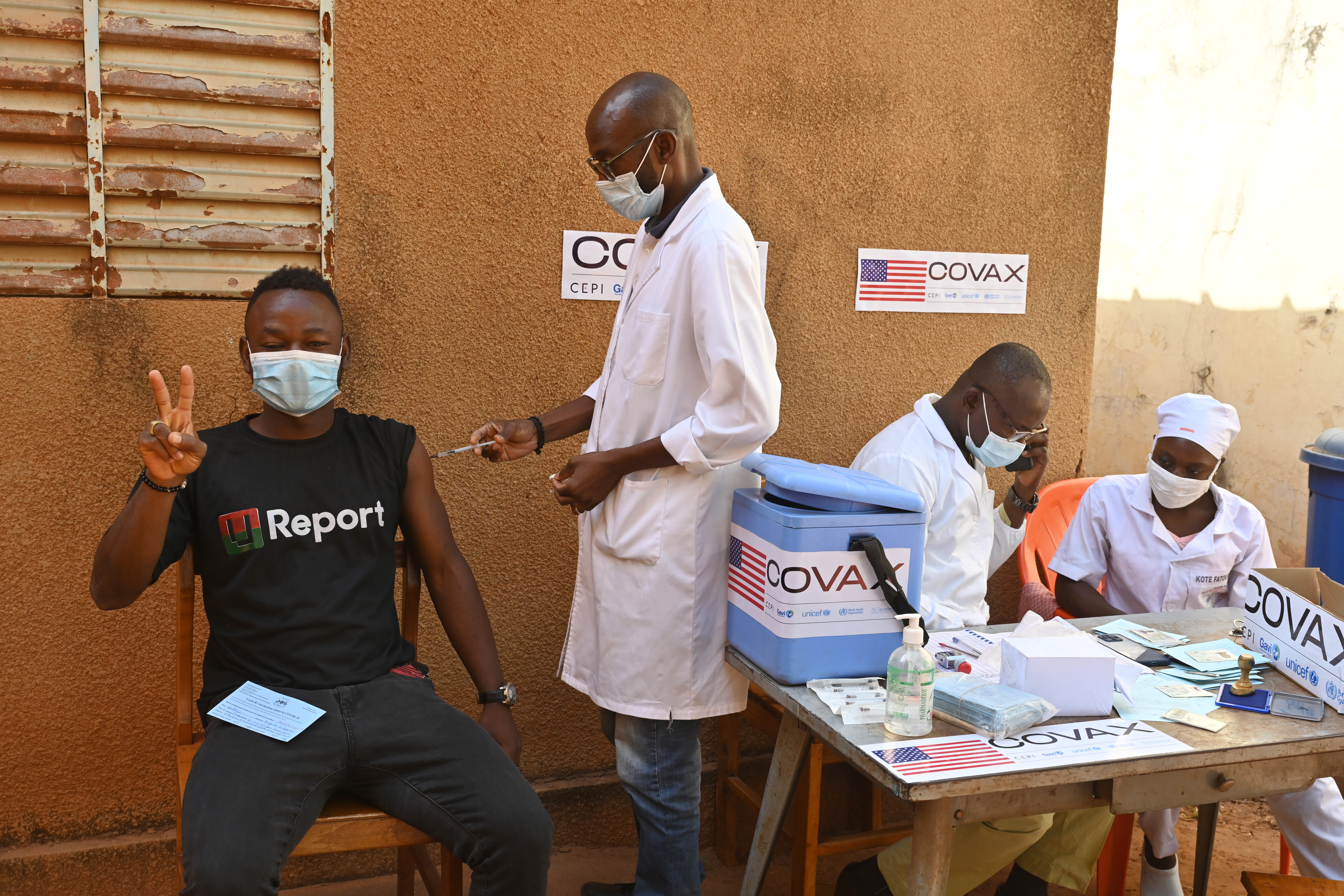On December 31, 2019, the World Health Organization (WHO) received information through a disease reporting database about unexplained pneumonia cases in China.
The next day, WHO began working with the U.S. Centers for Disease Control and Prevention (CDC) to formulate an international response. By January 10th, 2020, WHO issued a comprehensive package of guidance to countries on how to detect, test, and manage potential COVID-19 cases, and how to best protect health workers.
Throughout 2020 and 2021, the UN mobilized a diverse set of resources to understand and combat the pandemic. The effort, led by the UN Secretary-General António Guterres and WHO, emphasized the need for countries to act in concert and outlined ways to suppress transmission of the virus, safeguard people’s lives and their livelihoods, and learn from the crisis. As Guterres said, COVID-19 “is more than a health crisis. It is a human crisis.”
While there have been challenges throughout, the scientific advances and mobilization of all of society in response to this pandemic have only been possible due to the international community’s insistence on cooperation. Through a unique partnership, known as the Access to COVID-19 Tools Accelerator (ACT-A), the UN has brought together governments, health organizations, scientists, businesses, civil society organizations, and philanthropists to: distribute over one billion COVID-19 vaccines to low and middle-income countries (including 100 million per week since the beginning of 2022); provide life-saving therapeutics and critically-needed diagnostics and personal protective equipment (PPE); and strengthen health systems in developing countries to meet the demands of the pandemic. As the largest single contributor to ACT-A, including its vaccine pillar, COVAX, the U.S. has played a key role in supporting these efforts.

Despite these strides forward, the COVID-19 pandemic is not over. As the rise and dispersion of recent variants has shown, the world will continue to be at-risk until more people are protected from the virus, especially in places with low vaccination rates. Beyond ensuring adequate supplies of vaccines, the UN Children’s Fund (UNICEF), UN Refugee Agency (UNHCR), WHO and other UN agencies are working to distribute vaccines and get them into arms.
HOW UN AGENCIES ARE WORKING TOGETHER TO END THE COVID-19 PANDEMIC
With COVID-19 impacting 193 countries, the United Nations developed a large-scale response across its various agencies to combat the crisis. At the forefront of the response is WHO, which is integrated within 150 health ministries around the world. In addition to providing scientific guidance, WHO has helped procure millions of pieces of PPE and other vital health commodities such as tests and testing supplies.
As the lead agency in the UN Global Supply Chain Task Force, WHO is working with the private sector, financing institutions like the European Investment Bank, and UN logistics partners like the World Food Programme (WFP) and UNICEF to establish an emergency supply chain for all low-resource countries around the world. WHO and the UN Office for the Coordination of Humanitarian Affairs organized a humanitarian appeal for the most vulnerable countries, bringing together existing appeals from UN partners, as well as identifying new needs.
Prior disease outbreaks have shown that this crisis will likely have a disparate impact on women and girls. Women are disproportionately represented in the health and social services sectors, increasing their risk of exposure. Stress, limited mobility and livelihood disruptions also increase women’s and girls’ vulnerability to gender-based violence and exploitation. In response, UN Women launched a public awareness campaign, the Shadow Pandemic. to raise awareness of the global increase in domestic violence amid the COVID-19 crisis. Moreover, if health systems redirect resources away from sexual and reproductive health services, women’s access to family planning, antenatal care and other critical services could suffer. The UN Population Fund (UNFPA) is working to address these needs and is on the ground distributing PPE for health workers and supporting health systems where needed.
In addition to the delivery and distributions of vaccines through COVAX, UNICEF also has aided in delivery of diagnostic tests, strengthened oxygen systems and provided other therapeutics, while ensuring front-line workers have access to PPE and other supplies to work safely.
The effects of the pandemic are far-reaching. The World Bank says 97 million people were pushed into poverty in 2020 and the International Labour Organization estimates that 205 million people will be unemployed in 2022, up from 187 million in 2019. The UN Development Programme (UNDP) is leading the UN’s socio-economic response to COVID-19 as part of its mission to eradicate poverty, reduce inequality and build resilience to crises and shocks. From tracking progress on vaccine equity to helping bridge the digital divide, UNDP is working to ensure we come out of this pandemic stronger and more capable of responding to the next crisis.